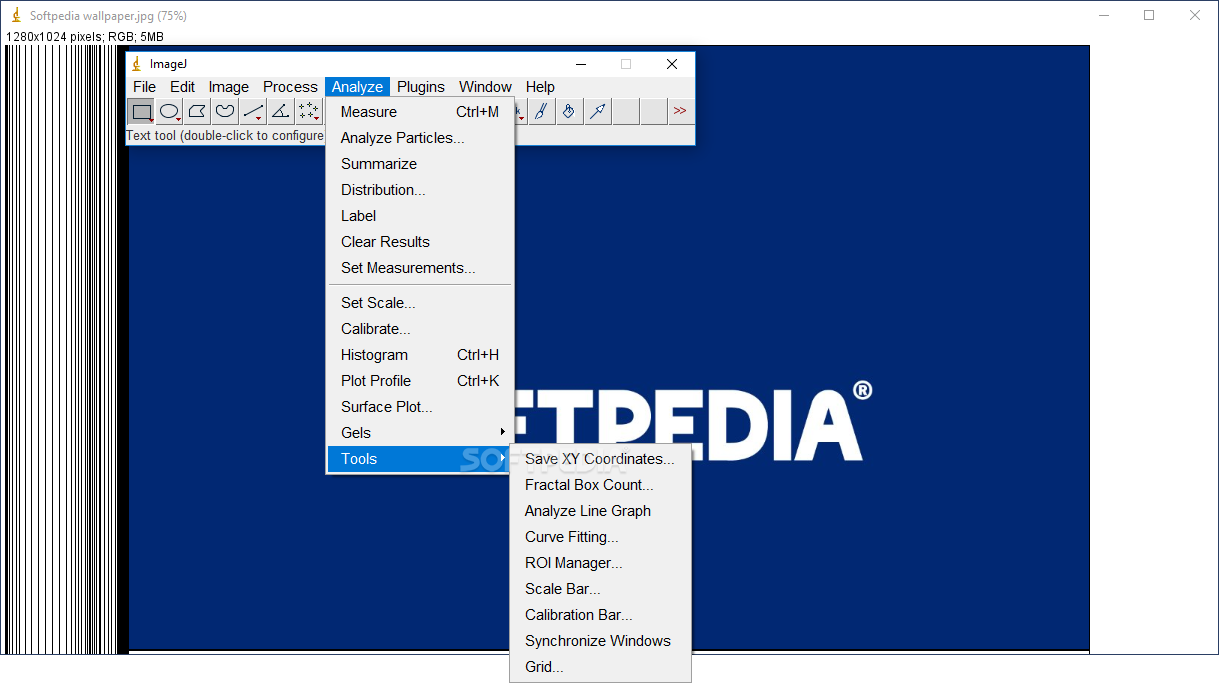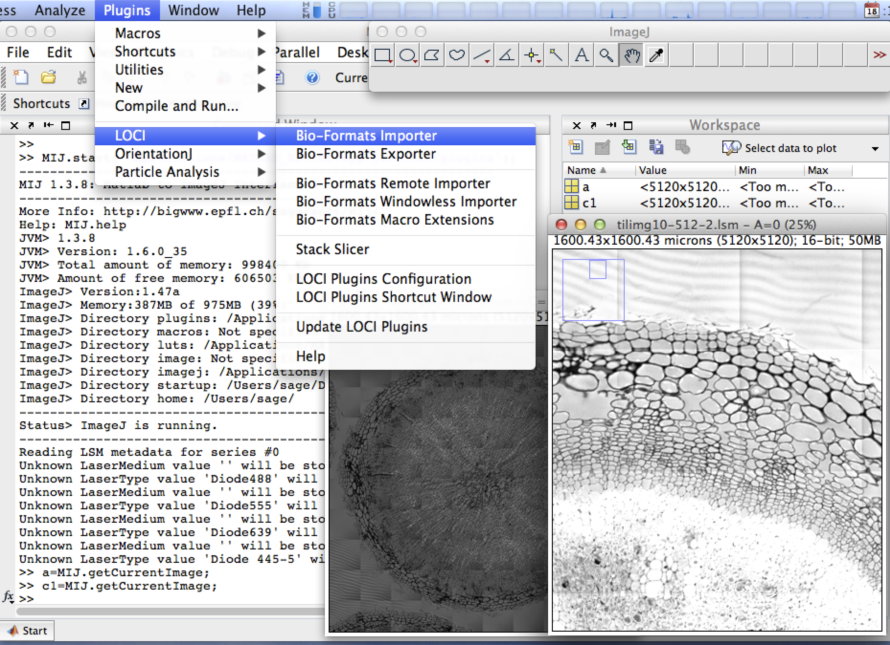

The Macro Recorder logs all commands entered through the Fiji graphical user interface (GUI).In the Fiji menu, go to Plugins > Macros… > Record. Tools: Access to source code of a class in the ImageJ/Fiji package.Language:Ĝhoose language your script is written in with syntax highlighting.Edit: Similar to word processor functionality (Copy, Paste, etc.).produced by print statements) and any errors encountered during script execution. Multiple scripts can be open at the same time and will show up as separate tabs. To start the script editor in Fiji go to menu File > New > Script…. The download section contains scripts written in the Jython and BeanShell languages. Step-by-step instructions in this tutorial are provided for developing scripts in Jython. BeanShell: Syntax similar to Java, versatileįiji provides a richer programming environment than ImageJ and it is recommended to use Fiji instead of ImageJ for any script development.



For mac users ImageOptim is excellent and free. Simply select Save As > Gif… from the file menu.ħ. Use an image optimisation tool to optimise the size of the GIF. Select Adjust > Size from the Image menu.Ħ. Resize the stack size if required – should be less than 1200px. If you want the animation slower or faster select Stacks > Animation > Animation Options… from the Image menu and change the frame rate.ĥ. Press the play button ‘>’ at the bottom left of the new stack to check the speed of the animation. Enter the slice numbers noted from step 2. From the Image menu then select Stacks > Tools > Make Substack…ģ. Scroll through the stack using the left and right cursor keys and make a note of the slice number (shown at the top of the stack window) for slices you want to include in the animated GIF. More instructions for importing captured sequences can be found in the Processing Instructions.Ģ. Load the sequence of images into a stack using the Import > Image Sequence… option from the File menu. Aside from online tools such as there are also desktop applications like GIF Toaster for mac or GIF Maker for windows, as well as Adobe Photoshop, but the easiest way is to use ImageJ which you’ll already have installed for processing the images.ġ. There are a number of ways of creating animated GIFs for upload to the OpenSourceOV gallery.


 0 kommentar(er)
0 kommentar(er)
